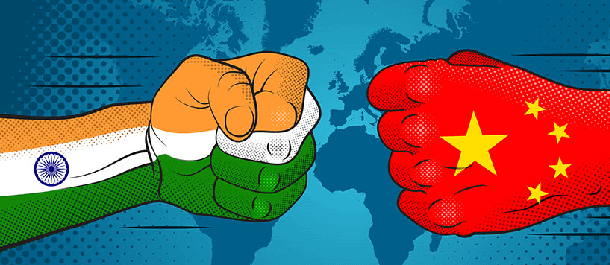As Indian and Chinese diplomats and top military commanders are trying ways to disengage in the Ladakh region, there are reports that China is building up its presence and pressure in the Pangong lake.
Indian TimesNow reports that China has just moved 6 Type-928D assault boats to the lake with each boat capable of carrying ten soldiers with his weapons and ammunition. The boats are close to the Line of Actual Control and should be a reason of concern for the Indian military establishment.
The Chinese PLA also have the bigger Swedish made armed CB-90 assault boats that can take 20 soldiers along with a three-member crew, the report adds.

Experts talking to the EurAsian Times stated that this could possibly in response to the Indian Navy deploying its elite Marine Commandos (MARCOS) near Pangong Lake in Eastern Ladakh.
“The MARCOS have been deployed in the Pangong lake area where the Indian and Chinese forces have been engaged in a conflict situation since April-May timeframe this year,” the ANI reported quoting government officials. The commandos would get new boats and infrastructure ‘for operations in the lake’.
India-China Galwan Valley Clash – US Report
Earlier, a top United States security panel has revealed that the Chinese government had orchestrated the deadly Galwan Valley clash against neighbor India as part of its “coercion campaign”.
According to a recent annual report of the United States-China Economic and Security Review Commission (USCC), Beijing had intentionally “planned” the attacks, which left 20 Indian soldiers dead, along with an unconfirmed number of Chinese soldiers.
“Some evidence suggested the Chinese government had planned the incident, potentially including the possibility for fatalities.” said the report.
Breaking: Top US panel says Galwan was planned by Chinese govt. United States-China Economic and Security Review Commission (USCC) says, "Some evidence suggested the Chinese government had planned the incident, potentially including the possibility for fatalities" pic.twitter.com/0eWEMaKMLE
— Sidhant Sibal (@sidhant) December 2, 2020
Formed in 2000, the USCC is tasked with investigating national security and trade issues between China and the US. Apart from that, the agency also provides recommendations to the US Congress for legislative and administrative action, on Beijing.
UNCC’s report had been presented to the US Congress in order to indicate that Beijing spearheaded the plans of escalating tensions with India along the Line of Actual Control, the de-facto border between the two nations, weeks before the actual clash.
“For instance, several weeks prior to the clash (Chinese) Defense Minister Wei (Wei Fenghe) made his statement encouraging Beijing to ‘use fighting to promote stability,” said the report.
We agree with the findings of @USCC_GOV report published today.
"The events of the past year demonstrate to the
international community the empty value of China’s promises…Beijing failed a major litmus test for its role as a responsible global actor."
https://t.co/2YmouWXOGq pic.twitter.com/O5vXxQ3Ue8— HKDC – Hong Kong Democracy Council (@hkdc_us) December 2, 2020
According to satellite images taken just a week before the clash, there was a considerable build-up of Chinese troops in the region. The UNCC report states that as many as 1,000 PLA soldiers may have been present at the site.
The report also signaled a stark increase of border skirmishes between the two nations under the helm of Chinese President Xi Jinping.
“China and India have engaged in multiple physical clashes along their border for decades, but since General Secretary Xi assumed power in 2012 the two countries have seen five major altercations along their border. The exact motivations behind the Chinese government’s provocative behavior on the LAC this year remain unclear,” said the report.
In what was another warning for New Delhi, more than two weeks before the incident, China’s state-owned tabloid Global Times had signaled their intent of escalating tensions at the Indian border in Ladakh.
According to the GT editorial, India was warned that it will suffer a ‘devastating blow’ to its ties with China if it meddled in the affairs of US-China.
“If in a new Cold War, India leans toward the US or becomes a US pawn attacking China, the economic and trade ties between the two Asian neighbors will suffer a devastating blow. And it would be too much for the Indian economy to take such a hit at the current stage,” said the Global Times editorial.
Post the clash, China has been aggressively ramping up infrastructure along the India-China border in order to assert its sovereignty over the region.
However, despite Beijing’s salami-slicing of the Indian territory, New Delhi is developing border infrastructure in the region on a large scale.
According to reports, areas along the Ladakh border, which were earlier inaccessible or took days to travel through, can now be reached within a few hours.
While diplomatic talks are underway to disengage the troops from the region, China has refused to withdraw its soldiers from the territory even as the stand-off enters its seventh month.
In what remains to be the deadliest border clash in more than half a century between the two nuclear-armed neighbors, the troops of both sides came to blows in the Galwan Valley in Eastern Ladakh on June 15.
Despite having observed a long-held protocol to avoid using firearms on the sensitive, high-altitude border, soldiers on both sides beat each other with rocks and wooden sticks embedded with nails leading to fatalities.




